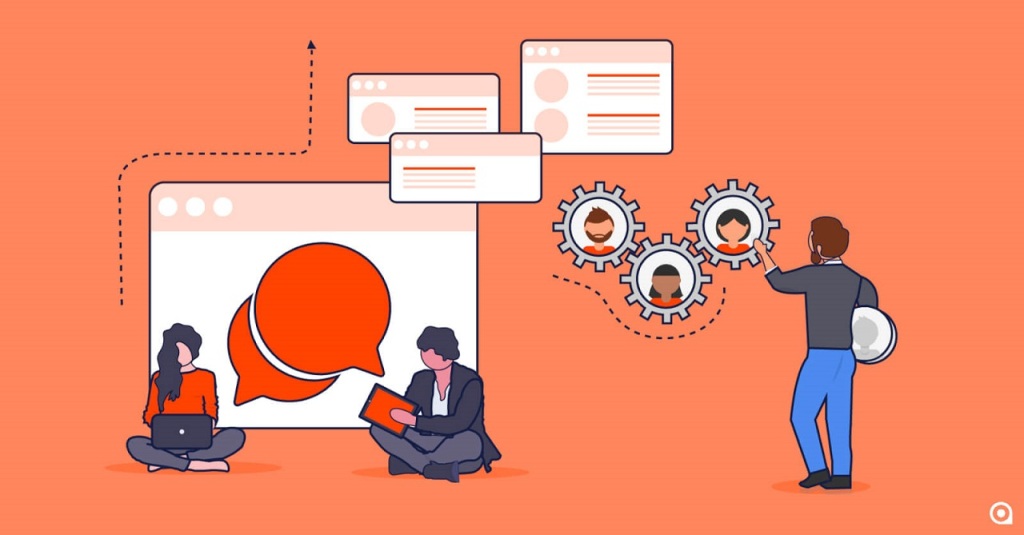
COVID-19 has forced companies the world over to enact — or create — remote working protocols. The likes of Box, Amazon, Airbnb, Facebook, Google and Microsoft have all told their employees some variation of “work from home”. But so too are more traditional organisations across fields such as real estate, accounting and local government. Zoom team-selfies, are slowly polluting Twitter and LinkedIn feeds.
But like most things worth doing, there are different levels of proficiency and sophistication to scale. Many newly-remote workers seem to conflate simply downloading Zoom, Slack, and having access to email with having this remote working thing sorted out.
But having a ball and a bat does not make you a Cricketer.
A Case – Automattic Company.
When it comes to swimming in the deep end of the remote working pool, few companies are doing it better than Automattic — the company behind WordPress, which powers 35% of all websites on the internet. Automattic has about 1,200 employees scattered across more than 75 countries, speaking 93 languages. It boasts a company valuation of US$3 billion and has made several significant acquisitions such as that of WooCommerce and blogging platform, Tumblr. The company does not have an office, with its employees collaborating almost exclusively online.
Automattic’s founder, Matt Mullenweg (hence the “double t” in the company’s name) recently appeared on a popular podcast to talk on what he calls the five levels of distributed teams (he prefers ‘distributed’ to ‘remote’ because the latter implies that there is still a central place of work). Encouragingly Mullenweg’s sentiments echo the fact that the tools are only as good as how you use them. In fact, abuse of tools can actually make us less productive.
The Five Levels of Distributed Teams
Level 1: Non-Deliberate Action
Nothing deliberate has been done by the company to support remote work, but employees can still keep the ball rolling somewhat if they are at home for a day. They have access to their smartphone, and email. Perhaps they dial in to a few meetings. But they will put off most things until they’re back in the office and will be a shadow of their office-bound selves.
Level 1 is where the overwhelming majority of organisations were prior to the COVID19 outbreak.
Level 2: Recreating the Office Online
This is where most organisations now reside — especially traditional ones. It is where your employees have access to videoconferencing software (eg. Zoom), instant messaging software (eg. Slack) and email, but instead of redesigning work to take advantage of the new medium, teams ultimately end up recreating online, how they work in the office.
This extends to many of the bad habits that permeate the modern office and suppress the ability of knowledge workers to actually think, with..:-
- . . . . 10-person video-calls when two people would suffice.
- . . . . 60+ interruptions a day — now via Slack and phone calls.
- . . . . the sporadic checking of and responding to email more than 70 times a day throughout the day.
- . . . . hyper-responsiveness that is expected of all employees, leaving them wired to desktop.

Mullenweg equates lack of redesigning work around the medium. A similar example was with the radio drama of the 1930s, which was essentially the acting out of plays over the airwaves. Adapting the content to the radio medium was not fully considered or appreciated at the time. At Level 2, people are still expected to be online from 9 to 5, and in some cases to be subject to what essentially amounts to spyware, with employers installing screen-logging software on their employee machines to ensure compliance.
Level 3: Adapting to the medium
At level 3, organizations start to adapt to and take advantage of the medium. Mullenweg points to shared documents (such as a Google Doc), that is visible to all and updated in real-time during a discussion, so that there is a shared understanding of what is discussed and decided, eliminating the risk of lost in translation errors and time wasted thereafter.
It’s at this stage that companies start to invest in better equipment for their employees as well, such as lighting for video-calls and background noise-canceling microphones. Effective written communication becomes critical the more companies embrace remote work. With an aversion to ‘jumping on calls’ at a whim, and a preference for asynchronous communication (more on that later), most of Automattic’s communications is text-based, and so accurate and timely articulation becomes key. In fact, Mullenweg says that most of the company’s hiring is performed via text as opposed to candidate phone or vide calls.
When it comes to meetings:
- Only hold a meeting if it is absolutely necessary and the same outcomes cannot be reached via a quick ad-hoc conversation, phone call, email, text or instant message.
- Set the meeting to 15 minutes by default, and only make it longer if absolutely necessary (the shorter the meeting, the more succinct you will have to be, and the less time there will be for pointless small talk and rambling).
- Set a specific agenda and desired outcome going into the meeting.
- Invite only ‘must have’ people (unless this is a big Type-1 decision, two people should usually do it with three on the rare occasion).
- Agree on next steps, allocate responsible person(s) and set due dates (this is especially important to avoid boomerang meetings).
- Never, ever, use a meeting simply to communicate information — that’s what email or IM is for. Many are indeed learning that all those meetings could have in fact been emails.

Level 4: Asynchronous Communication
‘I’ll get to it when it suits me.’ This is the nature of asynchronous communication. The reality is that most things do not require an immediate response. For most things, a one-way email or instant message should do the job, with the recipient responding when it suits them. If something really is urgent, then the mode of communication should reflect that. Pick up the phone, or tap that person on the shoulder, but only if it is truly urgent.
Aside from the obvious and massive benefit of giving knowledge workers time to think, create and get into the flow state (a psychological state whereby we are up to five times more productive according to McKinsey), but asynchronous communication predisposes people to making better decisions. If you want to cut emotion out of the equation, increase your response time. Giving people time to think between question and response, rather than fall victim to blurting out the first thing that comes to mind in a meeting or when tapped on the shoulders, delivers a compound benefit to the organization over time.
In order to avoid tennis games and duplication of effort, ensure that asynchronous messages:
- provide sufficient background detail, where necessary provide clear action item(s) and outcome(s) required.
- provide a due date
- provide a path of recourse if the recipient is unable to meet your requirements.
For example:
“Hey Sunil. Attached is the incorporation document for our new spin-off company. Please sign the document where requested and send it back to me by 4 pm this Friday. If you have any concerns, give me a call on 555 1983.”
Globally distributed teams, who work asynchronously, and master ‘passing the baton’, can get three times more done than a local team relying on everybody to be in an office between 9am and 5pm.
Awaken the Night Owls
Science suggests that our preferred sleeping patterns — our chronotypes — are programmed at birth. People are either night owls or early birds. Several studies have found that about 30 to 40 per cent of the population are night owls, which means that the modern 9-to-5 workday is sabotaging the creative and intellectual efforts of almost half the workforce. Studies show that while early risers are more alert in the morning, night owls show stronger focus and longer attention spans 10 hours after waking than their early-bird compatriots.
Level 5: ‘Nirvana’
This is where your distributed team works better than any in-person team ever could. Mullenweg equates this level with having more emphasis on ‘environment design’, insofar as the organization’s culture, and the physical environment people work in is concerned.
The disadvantages:
Three big disadvantages or concerns that face newly remote teams, and how to counter them, can be found below:
- Team bonding and building
- Instead of telling their employees to be at the office 11 months a year, and have 4 weeks off, the script gets flipped. Employees have 11 months of remote work a year and have to make time to travel for up to 4 weeks a year for team bonding and building events.
- To counter this, organizations can make use of custom-built apps which keep track of who has met who, and then assign seats, say at a dinner party, so that people sit with people they’ve not yet met before.
- Instead of telling their employees to be at the office 11 months a year, and have 4 weeks off, the script gets flipped. Employees have 11 months of remote work a year and have to make time to travel for up to 4 weeks a year for team bonding and building events.
- Osmotic and office communication
- With everybody working online, you miss out on watering hole conversations, overhearing other people say something that you can help with, or just having a general awareness of your team’s activities by virtue of being within earshot of discussions.
- To counter this, some organizations use an internal blog, and a place where an incredible amount of conversation and activity is chronicled and captured.
- With everybody working online, you miss out on watering hole conversations, overhearing other people say something that you can help with, or just having a general awareness of your team’s activities by virtue of being within earshot of discussions.
- Security
- Mullenweg points to endpoint security —computer networks that are remotely bridged to client devices — and used for BYOD such as laptops and smartphones.
- The alternative — being inside the office wall, as Mullenweg says —essentially becomes a single point of failure, and compromises depth in defense.
- What we should be doing instead is rather than over-emphasizing just access control, we need to be protecting against malicious behaviors. With over 70% of IT hacks using social engineering to get inside, he has a point.
***Concept Courtesy – http://www.automattic.com
Content Curated By: Dr Shoury Kuttappa.

